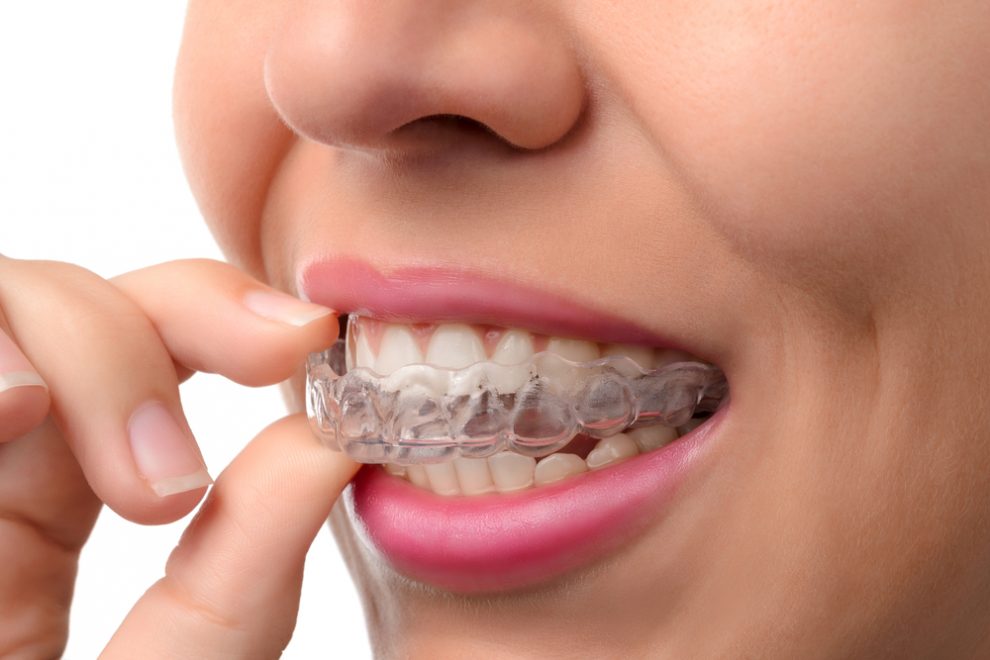How Invisalign Works
Invisalign invisible braces are a form of orthodontic procedure using simple linear braces to move the teeth into proper positioning.
Invisalign alignment is nearly translucent, does not contain metal and is optimized for the teeth. They toil in a sequence of trays and move your teeth progressively. Every tray is made to make the teeth marginally straighter than the preceding tray. Usually, the teeth move up to a rack of 0.25 mm. You will get a new set every two weeks and slowly shift your teeth to the perfect positioning.
Just pop in the trays and you’re good to go! No brackets are needed that will be uncomfortable and awkward. Invisalign are plainly and scarcely visible, making them suitable for adults and adolescents preferring a more discreet corrective alternative.
A further stipulation among certain orthodontists is that Invisalign typically takes longer than metal braces when advising their patients about the disparity between Invisalign and a more conventional procedure. How does that happen? Since plastics are not as sturdy as metal and, naturally, the aligner mechanism advances at a slower rate than metal braces.
The recovery cycle for adults is approximately 12 months for a typical adult, depending of course on the seriousness of the condition. Treatment duration can differ for teenagers. The specialist will work closely with all patients to establish a separate care plan that is completely suited to their personal needs.
This has a range of good effects, including the fact that Invisalign patients feel less pain than people who prefer braces. They are less wretched because their teeth are forced and pulled less.
Does Invisalign Work?
At the onset, the aligners were only able to cope with just a few conditions, while the more critical issues required more conventional therapies. Now orthodontists have even more choices for buttons, attachments, movements, and elastics too which can be added to the aligner.
You will require a consultation with your dentist before you begin Invisalign. Your dentist will decide whether you are an appropriate candidate and take a snapshot at this appointment. This is the best time to raise questions about the function of Invisalign. Your dentist takes X-rays to trace their beginning positions and then scans or moulds your teeth.
One of Invisalign’s most common criteria is that the aligners only work on very small matters. However, the fact is that Invisalign will correct many of the small, mild and some even extreme problems that can be corrected by a variety of metal braces. The braces themselves, without the assistance of other applications like expanders, separators, or fearful headgear do not necessarily solve most serious orthodontic problems. Invisalign can correct gaps, crowding, and even turning teeth, as well as wire and braces can amend these issues.
Benefits of Using Invisalign
The aligner device itself has many advantages, including the ability to remove them to facilitate teeth brushing, eat and disinfect the trays. They are practically imperceptible (thus the name), and can release a person’s self-consciousness that comes with a metal brace. This extends specifically to teenage structures in Invisalign, as teenagers frequently have trouble wearing braces. With conventional therapies, removing the braces is not practical and the braces may make it harder for the wearer to clean their teeth.
Invisalign, unlike brackets and wires, does not rub or irritate the lips. This eliminates the need to concern yourself with waxing on painful brackets that lead to scraping the inside of your cheeks, soreness, and bleeding— that’s not a problem with Invisalign.
Is There a Possibility of Failure with Invisalign?
One of Invisalign’s biggest degradations is the fact that patient adherence is very high. Since a patient can take the trays off anytime they want, a few patients can forget to wear them or will not wear them every day for hours. When worn for over 23 hours per day, Invisalign is most effective.
Aligners should be taken off mainly for feeding and cleaning and flossing the teeth. It could be safer for patients who have difficulties fulfilling this guideline to use metal braces that cannot be removed. However, these kinds of patients usually have discrepancies meeting food restrictions and cleaning schedules. A safer action plan is to become the kind of patient who follows the rules your orthodontist has given you.
After Care
Retention is the last step of the therapy with Invisalign. Once you have accomplished the ultimate objective – a big grin – the doctor will prescribe Invisalign retainers (which is the same, regardless of whether you have progressed through conventional braces or indiscernible aligners). Retainers are important because sadly, without them, the teeth may be restored to their initial position before treatment.






Add Comment